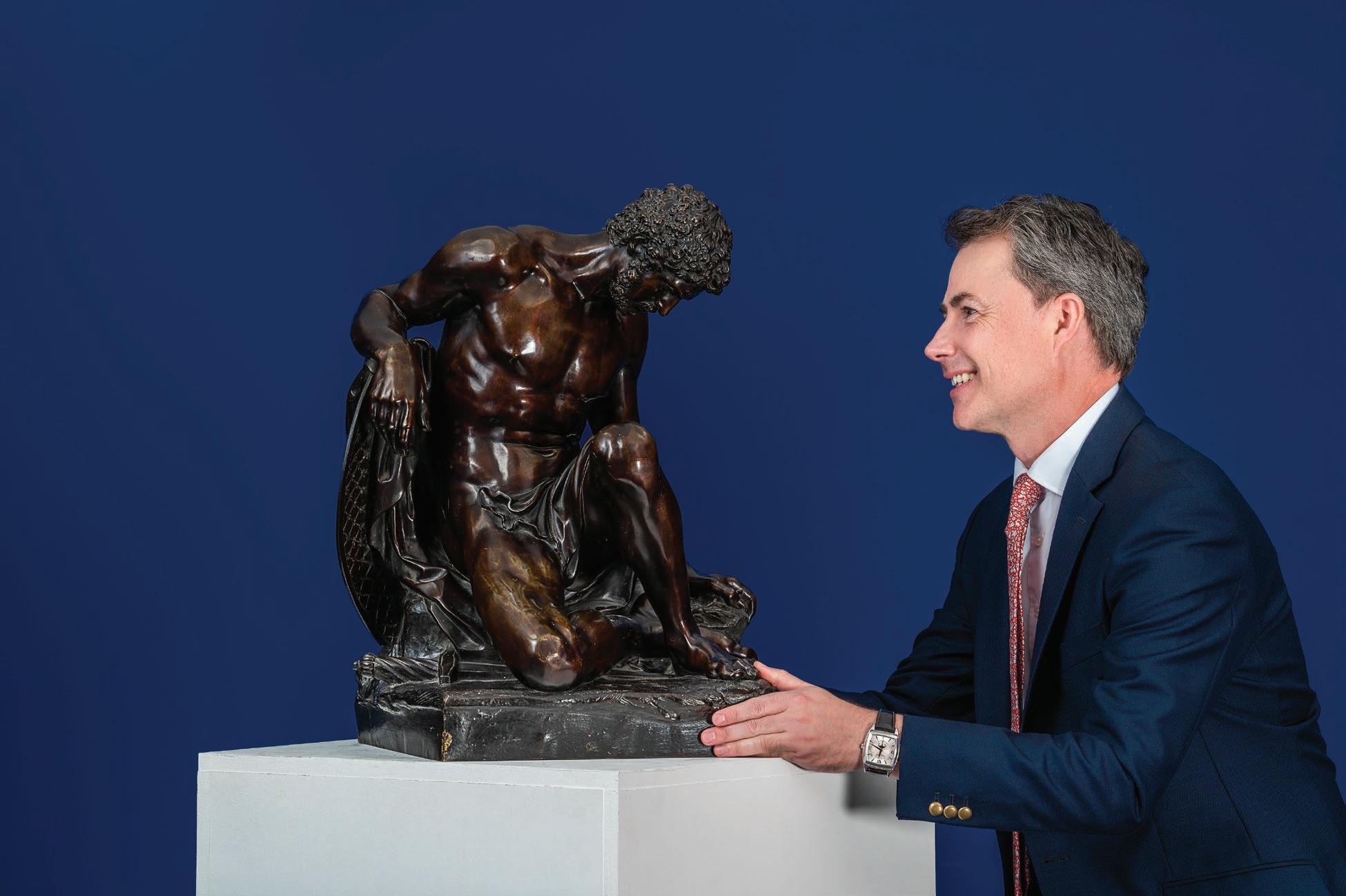
2 minute read
FURNITURE, WORKS OF ART & CLOCKS
Mark Yuan-Richards +44 (0)1722 411854 myr@woolleyandwallis.co.uk
Neil Grenyer +44 (0)1722 446974 ng@woolleyandwallis.co.uk
Advertisement
The Dying Gladiator By Pierre Julien
The finely executed bronze sculpture that I am admiring in the above photograph is a rare bronze version of the Dying Gladiator by the French sculptor Pierre Julien (1731–1804). Julien was born in Le Puy and after training with a local sculptor he went to Paris and joined the workshop of Guillaume II Coustou. He spent three years in Rome after winning a scholarship to the Académie de France, returning to Paris in 1771 to continue working for Coustou. It was not until Coustou’s death in 1777 that Julien started to develop his own artistic personality, adapting his style towards a pure version of neo-classicism typified by this bronze. The original marble, which is now in the Musée du Louvre, was Julien’s reception piece when he was elected to membership of the Académie Royale in 1779.
The inspiration for the Dying Gladiator came from the Roman marble in the Capitoline Museums, usually known as the Dying Gaul. During the age of the Grand Tour this marble was one of the most famous antique sculptures and was widely distributed during the 18th and 19th centuries through bronze replicas. Julien would have studied the marble when he was in Rome, however his composition is more upright, better emphasising the tension, anxiety and ultimate failure of the gladiator to win the laurel crown beneath his left hand.
When Julien’s marble was exhibited at the Salon in 1779, it caused a sensation. One observer commented “It is a composition of genius…. This is not marble, it is real flesh…in a single word this figure is all soul!” Due to its popularity, bronze casts of the marble model would have been produced in Paris soon after, some probably in Julien’s lifetime. Our bronze version is a rare piece with only a few other known examples found in museums and collections in the UK and the USA. It will be very interesting to see how much it fetches in our October sale!
Left:
Head of Department, Mark Yuan-Richards, with The Dying Gladiator, bronze, early 19th century
After Pierre Julien (French 1731–1804)
Estimate £5,000–8,000
Opposite top left: The Adler Collection of Treen including a fine Charles II wassail bowl
Estimate £3,000–5,000
Opposite left:
Kenneth Neame: An Enduring Legacy
Lots 1–227
Opposite top right:
A rare New Zealand parquetry specimen wood card table by Anton Seuffert, dated 1867
Estimate £8,000–12,000
Opposite right:
A George III pocket globe by Nathaniel Lane
Estimate £2,000–3,000
Our October auction will feature a number of collections including the Adler Collection of Treen, which comprises over 50 lots of wooden carvings and bygones including a wonderful Charles II lignum vitae wassail bowl. Other notable collections include over 220 lots from the personal collection and remaining stock of the well-known antiques dealer and decorator, Kenneth Neame. Kenneth opened his first shop in Handel’s House on Brook Street in the 1950s and his reputation rapidly grew, his shop becoming a destination for the rich and famous. The sale will feature fine Georgian furniture alongside decorative chinoiserie tables, exotic blackamoor torchères and Regency porcelain, a feast for the eyes!














